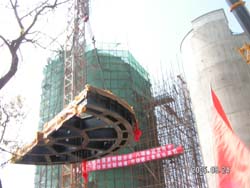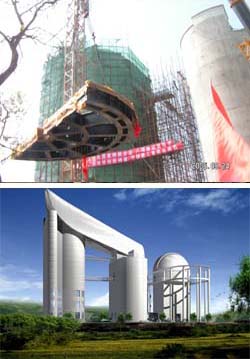

On Dec. 16, 2005, three major mechanical systems of the Large Sky Area Multi-Object Fiber Spectroscopic Telescope (LAMOST) were successfully installed at the Xinglong Station under the National Astronomical Observatories, CAS. The engineering feat is hailed as a milestone event for the 235-million-yuan mega-science project in this country.
LAMOST is a meridian reflecting Schmidt telescope laid down on the ground with its optical axis fixed in the meridian plane. It consists of a reflecting Schmidt corrector MA at the northern end, a spherical primary mirror MB at the southern end and a focal plane in between. So far, the supporting and mounting systems for the MA, MB and focal plane have already been in place and the project will enter the stage of on-site assembly and adjustment.
When completed in 2007, this ambitious project is expected to help the astronomical community in this country take a leading role in wide field spectroscopy and in the field of large scale and large sample astronomy and astrophysics, whether extra-galactic or galactic. It will provide Chinese astronomers with the capability to carry out massive surveys of faint celestial objects. The telescope is designed specifically to take the spectra of many objects simultaneously over a wide area of sky. In fact, its field of view is five degrees and it will be able to take the spectra of up to 4,000 objects at once.






